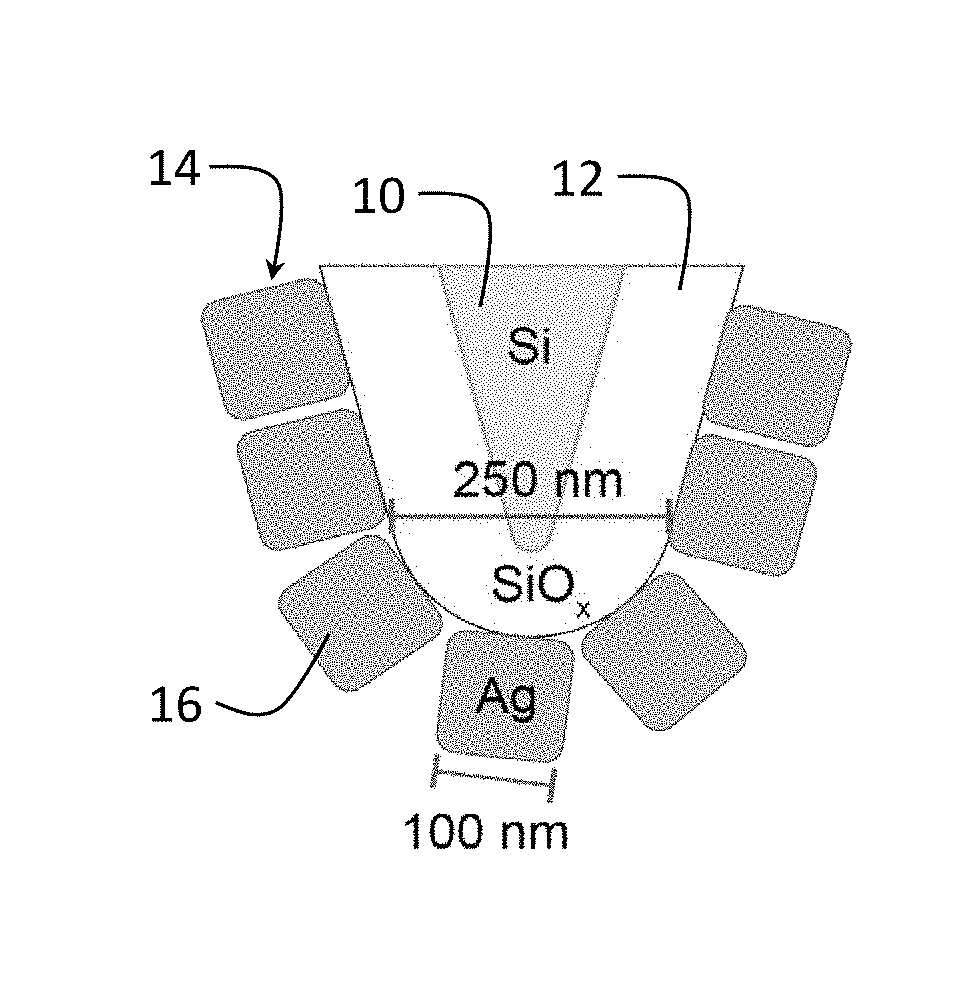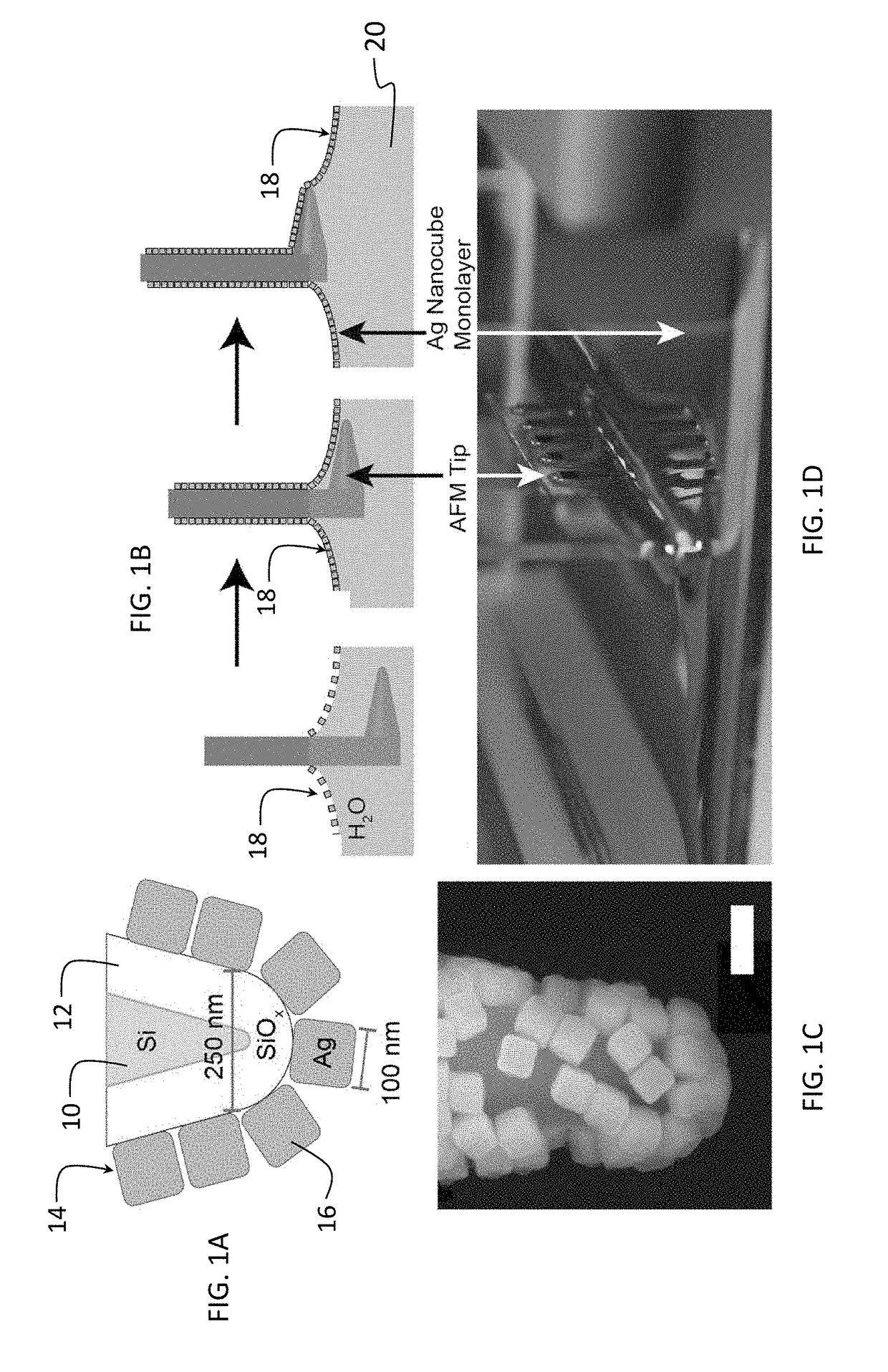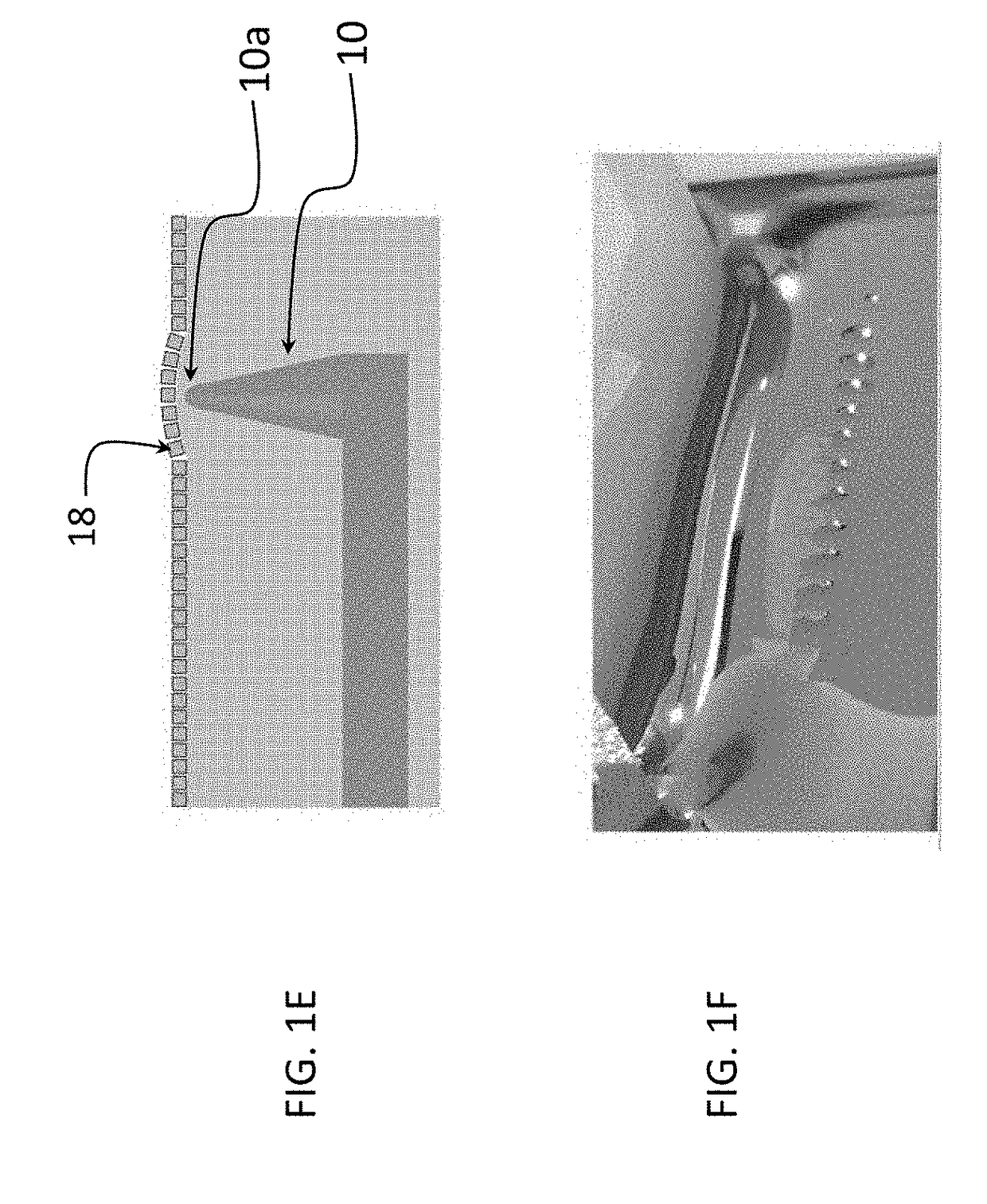Nanoantenna scanning probe tip, and fabrication methods
a scanning probe and nanoantenna technology, applied in scanning probe microscopy, measuring devices, instruments, etc., can solve the problems of preventing companies and research groups from investing in ters equipment, high variability of ters probes, and high cost and reliability of commercial tips currently on the mark
- Summary
- Abstract
- Description
- Claims
- Application Information
AI Technical Summary
Benefits of technology
Problems solved by technology
Method used
Image
Examples
Embodiment Construction
[0025]A preferred embodiment is a nanoantenna scanning probe. The scanning probe includes a sharp probe tip that is covered with contiguous film of predetermined sized and shaped plasmonic crystals. In preferred embodiments, the sharp probe tip is an AFM tip, and in other preferred embodiments the sharp probe tip is a conductive STM tip or a tuning fork tip. In preferred embodiments, the AFM tip is a blunted AFM tip. In preferred embodiments, the AFM tip is covered with a monolayer of the predetermined sized and shaped plasmonic crystals. The plasmonic crystals make the AFM probe into a nanoantenna.
[0026]A preferred embodiment is a method for fabricating nanoantenna scanning probes. Nanoparticles having a predetermined size and shape are trapped at a liquid surface using surface tension. The nanoparticles are allowed to form a uniform and organized monolayer film. A portion of the film is transferred to sharp probe tip, such as an AFM tip, conductive STM tip or a tuning fork tip. Th...
PUM
 Login to View More
Login to View More Abstract
Description
Claims
Application Information
 Login to View More
Login to View More - R&D
- Intellectual Property
- Life Sciences
- Materials
- Tech Scout
- Unparalleled Data Quality
- Higher Quality Content
- 60% Fewer Hallucinations
Browse by: Latest US Patents, China's latest patents, Technical Efficacy Thesaurus, Application Domain, Technology Topic, Popular Technical Reports.
© 2025 PatSnap. All rights reserved.Legal|Privacy policy|Modern Slavery Act Transparency Statement|Sitemap|About US| Contact US: help@patsnap.com



